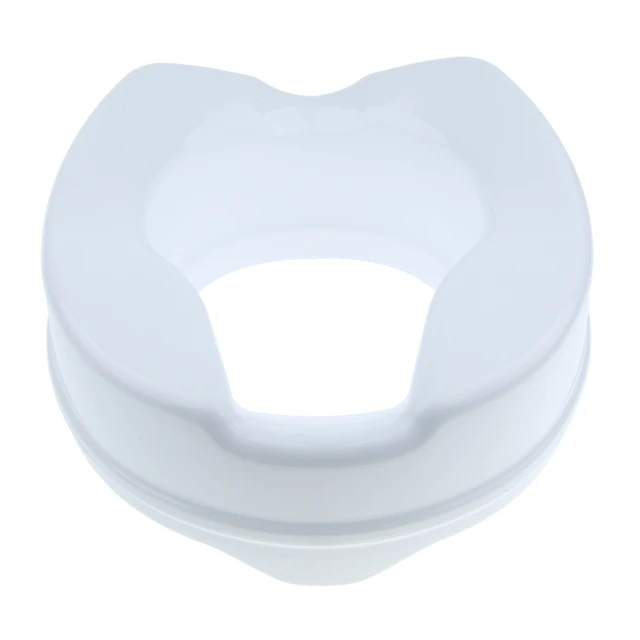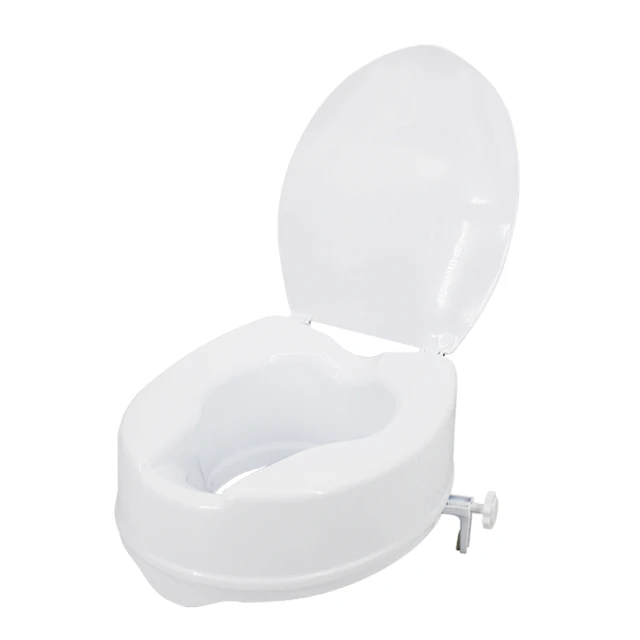 Introduction:
Introduction:
A raised toilet, also known as an elevated toilet seat or a raised toilet seat riser, is a bathroom fixture designed to increase accessibility and convenience, particularly for individuals with mobility limitations or disabilities. It provides a raised platform that can be attached to an existing toilet, enabling users to sit and stand up from a higher position. In this comprehensive guide, we will explore the features, benefits, and considerations associated with a raised toilet. By understanding its functionality and suitability, we can enhance bathroom accessibility and improve daily living for those with special needs.
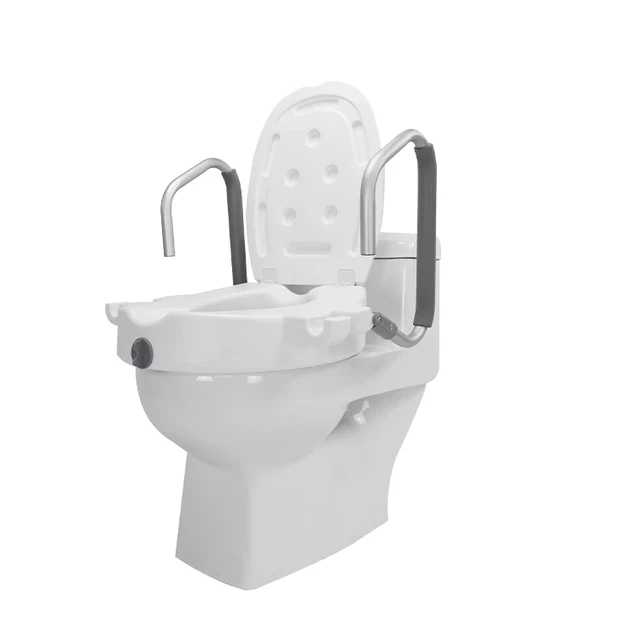 Some common materials used for raised toilet seats include:
Some common materials used for raised toilet seats include:
Raised toilet seats are available in various materials, each offering different characteristics and benefits. Some common materials used for raised toilet seats include:
Plastic: Plastic is a popular material for raised toilet seats due to its lightweight nature and ease of cleaning. It is durable, moisture-resistant, and typically more affordable than other materials.
Polypropylene: Polypropylene is a type of thermoplastic polymer commonly used for raised toilet seats. It is lightweight, durable, and resistant to chemicals and moisture. Polypropylene seats are easy to clean and maintain.
Foam: Some raised toilet seats feature a foam cushioning layer, often covered with a waterproof vinyl or fabric material. Foam seats offer added comfort, particularly for individuals with pressure-sensitive skin or existing pain or discomfort.
Molded Composite: Raised toilet seats made from molded composite materials, such as a mixture of plastic and polymers, offer a balance of durability and affordability. They are relatively lightweight, easy to clean, and can withstand regular use.
Stainless Steel: Stainless steel raised toilet seats are less common, but they are known for their durability, stability, and resistance to corrosion. They offer a sturdy and long-lasting option, particularly for heavy or high-traffic settings like healthcare facilities.
Each material has its advantages in terms of weight, durability, hygiene, and comfort. The choice of material for a raised toilet seat may depend on factors such as the individual’s specific needs, personal preference, budget, and the intended use of the seat. It’s important to consider factors like ease of cleaning, stability, and hygiene when selecting a raised toilet seat material.
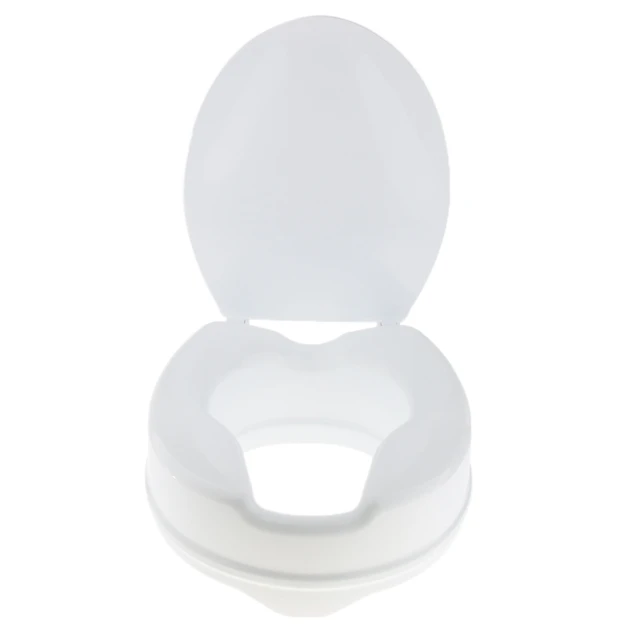 Features and Types of Raised Toilets
Features and Types of Raised Toilets
Height Increase:
A raised toilet increases the height of a standard toilet, typically by 2 to 6 inches, facilitating easier transfer and reducing strain on the knees and hips.
The additional height assists individuals with mobility limitations or post-surgical recovery to sit down and stand up with more comfort and stability.
Easy Installation:
Raised toilets are designed for easy installation and compatibility with most standard toilets.
They can be securely attached to the existing toilet bowl using clamps, brackets, or locking mechanisms.
Material and Construction:
Raised toilets are commonly made from durable materials such as plastic or molded polypropylene.
The materials used ensure stability and weight-bearing capacity while allowing for easy cleaning and maintenance.
Benefits and Accessibility Features
Enhanced Accessibility:
The raised height provided by a raised toilet improves accessibility for individuals with disabilities, limited mobility, arthritis, or joint pain.
It eliminates the need for excessive bending or mounting of the toilet, making it easier for users to sit and stand.
Fall Prevention:
Raised toilets reduce the risk of falls and accidents by minimizing the distance between sitting and standing positions.
The increased stability allows users to maintain better balance and support during bathroom use.
Independence and Self-Care:
With a raised toilet, individuals with physical limitations can maintain a greater level of independence and dignity in their personal hygiene routine.
It promotes self-care and reduces reliance on assistance for using the toilet.
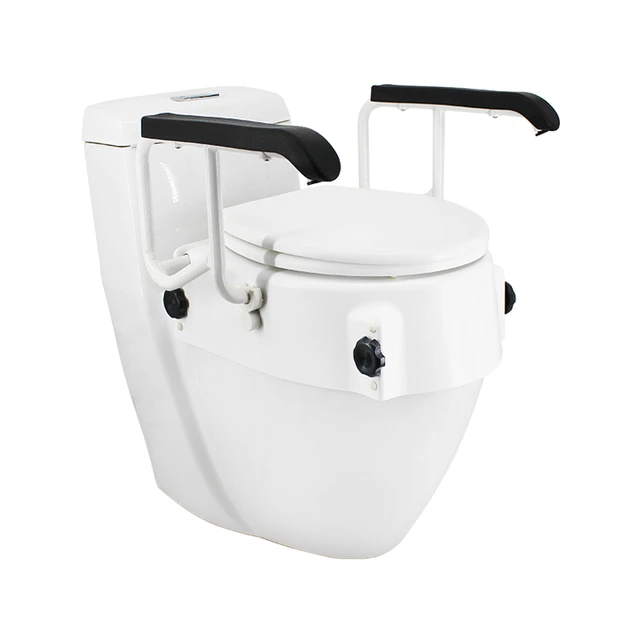 Considerations for Choosing a Raised Toilet
Considerations for Choosing a Raised Toilet
Height Adjustment and Stability:
Select a raised toilet with adjustable height settings to accommodate individual needs and preferences.
Ensure that the chosen model provides stability and secure attachment to the existing toilet bowl.
Weight Capacity:
Consider the weight capacity of the raised toilet to ensure it can support the user’s weight comfortably.
Opt for a model with a higher weight capacity for individuals who require additional support or are of larger size.
Additional Features and Accessories:
Some raised toilets come with extra features such as armrests, handles, or padding for added comfort and support.
Consider these features to meet specific needs and enhance user comfort.
Maintenance and Cleaning
Regular Cleaning:
Maintain cleanliness and hygiene by cleaning the raised toilet regularly using non-toxic household cleaners.
Cleaning should include both the raised seat and the underlying toilet bowl area.
Checking for Wear and Tear:
Regularly inspect the raised toilet for any signs of wear or damage, such as cracks, loose parts, or instability.
Promptly address any issues to ensure continued functionality and safety.
For various groups of people:
A raised toilet seat is an assistive device that increases the height of a standard toilet, making it easier for certain individuals with mobility limitations or physical disabilities to use. The raised toilet seat can be beneficial for various groups of people, including:
Individuals with Mobility Issues:
Raised toilet seats are commonly used by individuals with mobility impairments, such as those with arthritis, joint pain, lower limb weakness, or limited flexibility. The increased height reduces the need to bend down or squat, making it easier for them to sit down and stand up from the toilet.
Seniors:
Older adults with age-related mobility limitations or balance issues can benefit from a raised toilet seat. It provides stability and reduces the strain on their joints, making toileting more comfortable and safer.
Individuals Recovering from Surgery or Injury:
People recovering from hip replacement surgery, knee surgery, or other lower limb injuries may experience limited mobility and difficulty using a standard toilet. A raised toilet seat can help maintain independence and facilitate a smoother recovery process.
Individuals with Disabilities:
Individuals with physical disabilities, such as those with spinal cord injuries, muscular dystrophy, or cerebral palsy, may have difficulty using standard toilets due to limited mobility. Raised toilet seats can provide a more accessible and comfortable toileting experience.
Caregivers:
Raised toilet seats can benefit not only individuals with mobility limitations but also their caregivers. The increased height reduces the strain on caregivers’ backs and makes it easier to assist individuals during transfers onto and off the toilet.
It’s essential to consider individual needs and consult with healthcare professionals or occupational therapists for personalized recommendations on the appropriate use of a raised toilet seat. They can assess specific requirements and suggest the most suitable assistive devices for each individual.
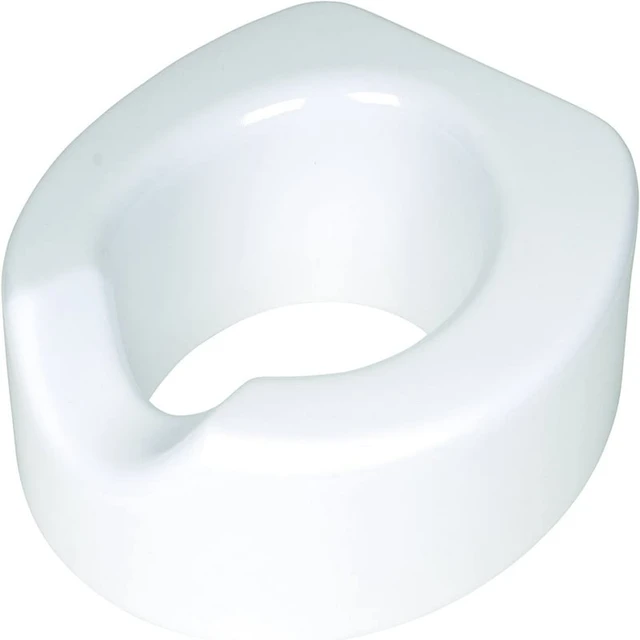 Conclusion:
Conclusion:
A raised toilet is a valuable bathroom fixture that enhances accessibility and improves the bathroom experience for individuals with mobility limitations. With its height increase and easy installation, it provides stability, safety, and independence in bathroom use. By understanding the features, benefits, and considerations associated with raised toilets, individuals and caregivers can make informed decisions that enhance daily living for those with special needs. Moreover, proper maintenance and regular cleaning ensure the longevity and hygiene of the raised toilet. With the aid of a raised toilet, individuals can navigate the bathroom with confidence, comfort, and convenience.
